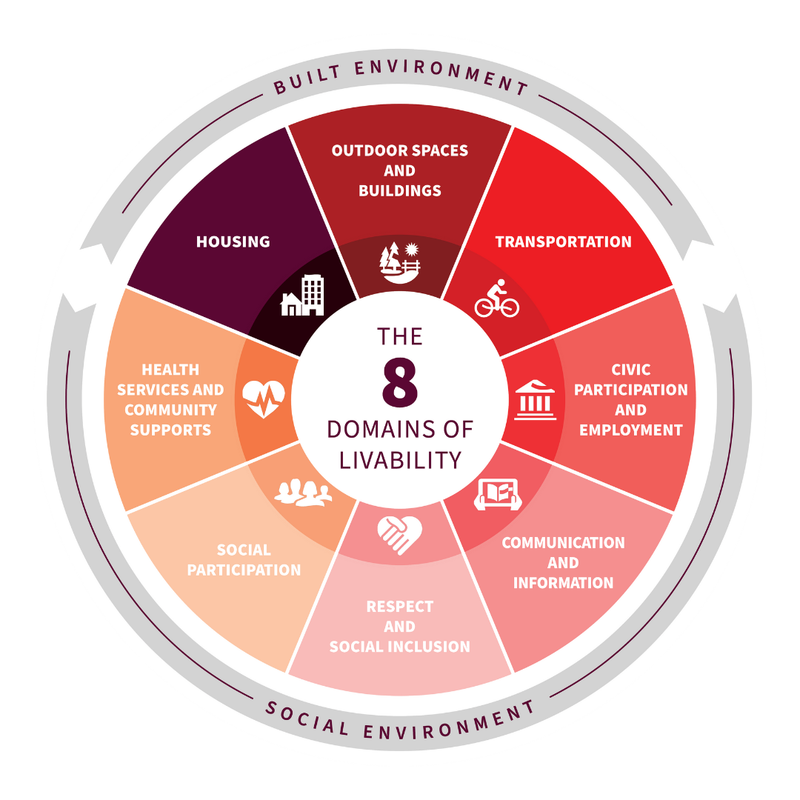It’s all about perspective
Looking at world – and even national – events can cause anxiety, fear, and an overall negative attitude. I personally do not let things affect me to the point that I hate people or lash out. Of course, I sometimes participate in a health debate but my disagreement with someone else doesn’t lead to m

O P I N I O N
MY THOUGHTS EXACTLY
By Brian Chicoine


Looking at world – and even national – events can cause anxiety, fear, and an overall negative attitude. I personally do not let things affect me to the point that I hate people or lash out. Of course, I sometimes participate in a health debate but my disagreement with someone else doesn’t lead to me hating them or harming them, or even assassinating their character.
I am often asked why I stay so calm and even-keeled with people. There is no magic formula to it, and I am far from perfect, but there is one thing that determines how I feel about or approach a situation. And that one thing is perspective. I look at things with a positive perspective…or a positive mindset.
Don’t get me wrong, sometimes life sucks and maintaining a positive mindset is difficult, but being positive is much better than the alternative. Luckily. I’m a “glass half-full” guy so maintaining a positive mindset is relatively easy for me.
What Is a Positive Mindset?
A positive mindset is a mental attitude that focuses on the good in any given situation, even when faced with challenges. It’s not about ignoring negative emotions or pretending that everything is perfect, but rather choosing to focus on possibilities, solutions, and the positives that exist alongside difficulties. When we adopt a positive mindset, we begin to look at setbacks as opportunities for growth, and instead of being overwhelmed by negative emotions, we practice resilience and optimism.
At its core, a positive mindset is built on the belief that we can influence our experiences through our thoughts, attitudes, and actions. It’s not about being relentlessly happy all the time; rather, it’s about acknowledging that our mental outlook plays a crucial role in shaping our reality.

The Relationship Between Positive Thinking and Joy
Joy is often considered a fleeting, elusive emotion. It’s something we experience in moments of pleasure or fulfillment, but it can also feel as if it’s something outside of our control. When things go well, we feel joy; when they go wrong, it’s harder to feel the same level of satisfaction or contentment. However, the link between a positive mindset and joy is much more profound than simply waiting for “good” things to happen.
- Positive Thinking Invites More Joyful Experiences
When we view the world through a positive lens, we become more attuned to the good things that are happening around us. Positive thinking opens our eyes to opportunities for joy that we might otherwise overlook. When you are focused on looking for the good in your day-to-day experiences—whether it’s a smile from a stranger, a beautiful sunset, or a simple moment of peace—you are more likely to notice these moments of joy, which can become the foundation for a happier mindset overall. - Shifting Our Focus Changes Our Perception of Life
The saying “What you focus on grows” holds true in that when we intentionally choose to focus on positive elements of our life, we not only feel more gratitude but also begin to shape our environment to reflect that focus. Our perceptions of events shift. For example, if we focus on the positive aspects of a challenging situation, we might see it as an opportunity for growth or a lesson to be learned rather than something to be frustrated by. In this way, positive thinking helps us reinterpret life events in ways that can lead to greater satisfaction and joy. - Resilience in the Face of Adversity
A positive mindset doesn’t just make us happy in good times—it helps us stay positive and maintain joy even during difficult moments. Life is full of unexpected challenges, and how we respond to them makes a huge difference. When we adopt a positive mindset, we develop resilience, which helps us navigate difficulties with a sense of hope and determination. We may not always be able to control external circumstances, but we can control how we choose to respond to them. With resilience, we learn to bounce back from adversity, which in turn cultivates joy in the process. - Scientific Support for Positive Thinking
Research in psychology and neuroscience has shown that a positive mindset can actually increase our overall happiness. Studies have found that people with a more positive outlook tend to be happier, healthier, and more successful in life. This could be due to the effects that positive thinking has on brain chemistry. For example, positive thoughts activate areas of the brain associated with reward and pleasure, which results in the release of “feel-good” neurotransmitters like dopamine and serotonin. These chemicals boost our mood and create an overall sense of well-being.
The Science of Joy: Why Positive Mindsets Foster Happiness
Let’s take a closer look at the science behind how a positive mindset can lead to greater joy. There are several key elements that explain this phenomenon:
- Neuroplasticity
The brain is constantly changing and adapting—a concept known as neuroplasticity. This means that our thought patterns can literally rewire the brain. When we practice positive thinking, we strengthen neural pathways associated with optimism and joy. Over time, this leads to a more naturally positive outlook. For example, someone who habitually practices gratitude or reframes negative thoughts might start to find it easier to focus on positive aspects of their life, which in turn creates more joy. - The Broaden-and-Build Theory of Positive Emotions
Psychologist Barbara Fredrickson developed the Broaden-and-Build theory, which suggests that positive emotions, like joy, broaden our thinking and build personal resources. Positive emotions open up our mind to new possibilities, encourage creativity, and improve problem-solving skills. As a result, we are more likely to experience long-term happiness because we are better equipped to handle life’s challenges, connect with others, and enjoy new experiences. - Impact on Physical Health
Positive thinking doesn’t just influence our mental well-being; it can also have a profound impact on our physical health. Research has shown that people with a positive mindset tend to have lower levels of stress, reduced inflammation, and a stronger immune system. These physical benefits contribute to an overall sense of well-being, which can help us feel more joyful on a daily basis. When we feel good physically, it’s easier to experience emotional well-being as well.

Changing Your Mindset: How to Cultivate a Positive Outlook
Shifting to a positive mindset isn’t always easy, especially when we’ve been accustomed to negative or critical thinking. However, it is entirely possible to rewire your brain and develop a more positive attitude with consistent practice. Here are some practical strategies for cultivating a mindset that fosters joy:
- Practice Gratitude
One of the simplest and most effective ways to build a positive mindset is to regularly practice gratitude. When you focus on the things you are thankful for, you shift your attention away from what’s lacking in your life. Start by keeping a gratitude journal, where you write down three things you are grateful for each day. This can be as simple as appreciating a warm cup of coffee or recognizing the support of a close friend. Over time, gratitude will become a habit, and you’ll find yourself experiencing more joy in your everyday life. - Reframe Negative Thoughts
Reframing is the practice of changing the way you think about a situation. Instead of viewing challenges as obstacles, try to see them as opportunities for growth. For example, if you’re facing a difficult work project, instead of thinking, “This is too hard; I can’t do it,” reframe your thoughts by saying, “This is a chance for me to develop my skills and learn something new.” This shift in perspective can transform frustration into motivation and open up new possibilities for joy. - Surround Yourself with Positivity
The people we interact with play a significant role in shaping our mindset. Surround yourself with individuals who uplift and encourage you, rather than those who perpetuate negativity. Additionally, consume media that fosters a positive attitude—whether it’s uplifting books, podcasts, or even social media accounts. By immersing yourself in positive influences, you create an environment that supports your shift towards a joyful, positive mindset. - Practice Mindfulness and Meditation
Mindfulness is the practice of being fully present in the moment without judgment. When we are mindful, we are less likely to dwell on negative thoughts or get lost in worry. Meditation, specifically mindfulness meditation, can help train your brain to focus on the present, reduce stress, and cultivate a sense of inner peace. Over time, these practices will help you approach life with a more balanced, positive outlook, leading to increased joy and satisfaction. - Set Positive Intentions
Each day, set positive intentions for how you want to approach your life. Whether it’s cultivating more patience, focusing on the positive aspects of your day, or simply choosing to smile more, having clear intentions helps guide your mindset toward positivity. These small, intentional actions accumulate over time and have a big impact on your overall sense of joy.

Conclusion: The Power of Positive Thinking
A positive mindset is not just a passing trend; it’s a powerful tool that can significantly impact our ability to experience joy and satisfaction in life. By focusing on the good, reframing negative situations, practicing gratitude, and fostering resilience, we can cultivate a mindset that invites more happiness and fulfillment. The shift from a negative to a positive mindset may not happen overnight, but with practice, it becomes a transformative force that influences not only our internal world but also how we interact with the world around us.
When we approach life with a positive mindset, we begin to see opportunities for joy where others might see obstacles. We create more meaningful connections with others, experience greater emotional resilience, and ultimately lead a more joyful and fulfilling life. By changing the way we think, we change the way we live. And in doing so, we unlock the incredible potential for joy that already exists within us.
As always, you can email your comments to me at mythoughts603@gmail.com.





